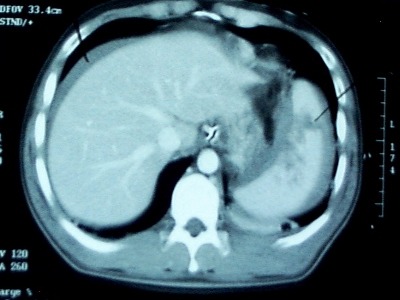We love our CT scans! They’re so high tech, with such detailed images popping up on the monitor so quickly. To take advantage of the detail, we’ve come up with fancy grading systems that can be used to direct care. But are they all they’re cracked up to be?
CT grading of spleen injury is a prime example. We’ve got a nice, detailed system that looks at laceration depth, subcapsular hematoma size and vascular injury. We can use it to predict the likelihood of needing an operation and where we should admit someone in the hospital (ICU vs ward). And when we see the injury on the screen, we believe that we can accurately apply the scoring system to these beautiful images.

But unfortunately, it’s not that simple.Scanning obtains multiple images in an axial plane and lays them out for us to look at. However, the spleen (and most other organs) and not shaped like a cube. It is curved, with complex nooks and crannies that can look like cracks. Moderate to large hematoma around the spleen can obscure lacerations. And the hilum is even more complicated and variable in shape.
Because of this, CT scans of the abdomen tend to underestimate the true extent of injury, especially in the higher grades. Grade I and II injuries are usually accurate, but in Grades III-V, the scan tends to undergrade by 1 (30% of cases) or 2 grades (45% of cases) when re-graded at surgery.
Bottom line: Grade I and II injuries are generally managed in a lower intensity setting and almost never require operation. But beware of the higher grades! It is very likely that it’s higher than you think. This means that if your patient slowly becomes tachycardic or their blood pressure softens, believe the clinical evidence. Don’t rely on a CT scan that was done hours ago that may be hiding a more severe injury than you think! (This applies to liver injuries as well)
Related posts:
Reference: Correlation of operative and pathological injury grade with computed tomographic grade in the failed nonoperative management of blunt splenic trauma. Euro J Trauma Emerg Surg – Online First 2 Mar 2012.
